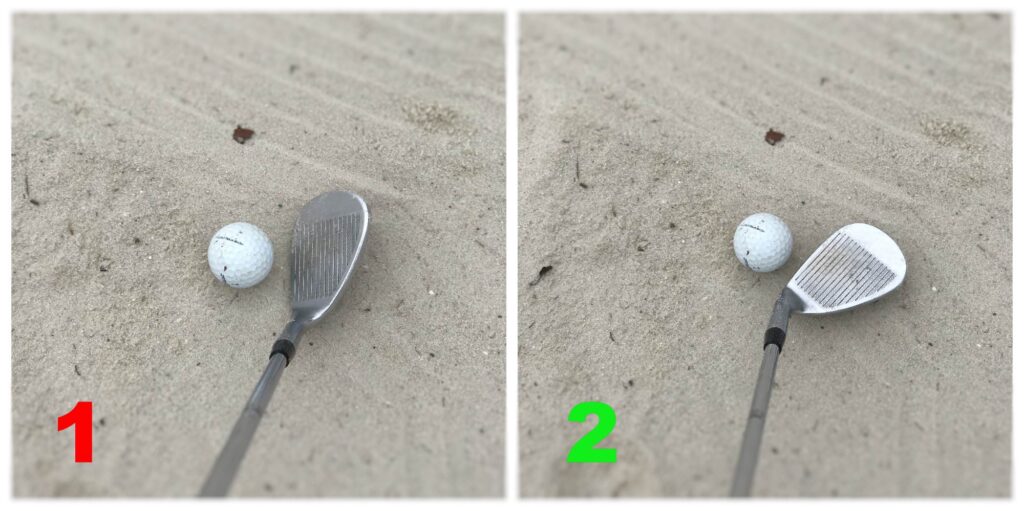If you’re just starting out in golf and find yourself faced with a challenging bunker shot, fear not! In this article, we’ll explore handy tips to help beginners navigate those sandy traps with confidence. From properly gripping the club to adopting the right stance, we’ve got you covered. So, get ready to elevate your bunker shot game and leave the sand behind!
The Importance of Proper Technique
When it comes to playing bunker shots in golf, having proper technique is crucial. Bunker shots can often be intimidating, but with the right fundamentals and approach, you can greatly improve your success rate and confidence around the green. In this article, we will explore the key elements of bunker shot techniques and provide helpful tips for beginners to enhance their skills.
Understanding the Fundamentals
Before delving into the specific aspects of bunker shots, it’s important to grasp the basic principles that govern this type of shot. Bunker shots require a different approach compared to shots from other areas of the course. The goal is to hit the sand behind the ball, relying on the sand’s momentum to propel the ball out of the bunker and onto the green. This technique helps to minimize the chances of the club digging too deeply into the sand, resulting in a mishit shot.
The Correct Stance and Alignment
A proper setup is essential for executing successful bunker shots. Start by addressing the ball with an open stance, meaning your feet should be slightly left of the target (for right-handed players). This open stance allows for better clearance, giving the club more freedom to swing through the sand. Additionally, position the ball slightly forward in your stance to ensure it is in line with the left heel (again, for right-handed players). This forward ball position helps create the necessary steep, descending angle of attack.
Maintaining a Balanced Setup
Maintaining a balanced setup throughout the swing is crucial for stability and control. It’s common for beginners to become tense and lose balance during bunker shots, especially when trying to avoid hitting the ball too far or leaving it in the bunker. To counter this, ensure that your weight is evenly distributed on both feet with a slight emphasis on the front foot. This balanced setup will promote a smooth swing and prevent unnecessary mishaps.
Selecting the Right Club
Choosing the correct club for the bunker shot is another important factor in achieving success. Different clubs have varying degrees of loft and bounce, which play a significant role in how the ball interacts with the sand. Understanding the characteristics of each club and their suitability for specific bunker shots will greatly improve your ability to execute successful shots.
Using Wedges for Bunker Shots
Wedges are commonly the preferred choice for bunker shots due to their high loft and bounce. The sand wedge and lob wedge are the two most commonly used wedges for bunker shots. The sand wedge typically has a loft between 54-58 degrees, providing enough lift and control to get the ball out of the bunker. On the other hand, the lob wedge has a loft of 60 degrees or higher, making it ideal for situations where you need to hit the ball high and land it softly on the green.
Consider the Loft and Bounce
When selecting a club for a bunker shot, it’s crucial to consider the loft and bounce. The loft is the angle of the clubface, determining the trajectory and height of the shot. Higher lofted clubs like the sand wedge and lob wedge are generally better suited for most bunker shots since they provide the necessary lift to clear the lip of the bunker.
Similarly, the bounce of the club plays a crucial role in preventing the club from digging too far into the sand. Bounce refers to the angle between the leading edge and the sole of the club. Clubs with higher bounce are more forgiving and less likely to dig into the sand, making them more suitable for fluffy or soft sand conditions.
Understanding Club Selection
Proper club selection is essential for executing effective bunker shots. In addition to wedges, certain situations may require the use of other clubs. For longer bunker shots or if you need extra distance, a pitching wedge or gap wedge may be suitable. These clubs offer slightly less loft compared to sand wedges, but they provide more distance and control than higher lofted wedges. It’s crucial to evaluate the specific conditions of your bunker shot and choose the club accordingly.
Mastering the Sand Explosion Shot
The sand explosion shot is one of the most common bunker shot techniques used to get the ball out of the sand and onto the green. Proper execution of this shot requires a combination of visualization, setup, and swing technique.
Visualizing the Shot
Before attempting the sand explosion shot, take a moment to visualize the desired shot trajectory and landing spot. Visualize the club entering the sand slightly behind the ball, exploding the sand upward and propelling the ball onto the green. This mental image will help focus your mind and provide a clear target for your shot.
Setting Up for Success
To successfully execute the sand explosion shot, it’s crucial to set up with the correct alignment and ball position. Open your stance with your feet slightly left of the target (for right-handed players). Position the ball slightly forward in your stance, ensuring it is in line with the left heel. These setup adjustments optimize the club’s entry into the sand and provide the necessary angle of attack for a successful shot.
Swing Technique and Follow Through
When executing the sand explosion shot, aim to swing the club along the target line and hit the sand approximately two inches behind the ball. This contact point allows the sand’s momentum to lift the ball out of the bunker. Maintain a smooth tempo throughout the swing and avoid deceleration, as it can lead to inconsistent shots. After impact with the sand, continue the swing motion and allow the club to follow through to a full finish. This follow-through motion ensures proper clubhead release and maximizes the chances of a successful shot.
Developing Consistency through Practice
Like any aspect of golf, developing consistency in bunker shots requires practice and repetition. By dedicating time to specific drills and creating a structured practice routine, you can enhance your skills and improve your sand shot capabilities.
Creating a Practice Routine
To improve your bunker shot consistency, incorporate dedicated practice sessions into your training regimen. Allocate a specific amount of time to focus solely on bunker shots, allowing yourself to experiment with different techniques and hone your skills. Start with simple drills such as repeatedly aiming to splash the sand and exit the bunker. As you progress, introduce more complex drills that simulate realistic on-course scenarios, such as various lie conditions and distance control challenges.
Working on Distance Control
Distance control is a crucial aspect of bunker play. Learning how to gauge the required power and swing length for different distances will greatly enhance your ability to leave the ball in favorable positions on the green. During practice sessions, spend time hitting bunker shots to various distances, focusing on achieving consistent control and accuracy. Experiment with different swing lengths and observe how the ball reacts to each shot. Over time, this practice will help you develop a better sense of distance control in bunker shots.
Improving Your Sand Shot Skills
In addition to practicing fundamental bunker shots, it’s beneficial to focus on specific skills that can improve your overall sand shot performance. For example, practicing shots from challenging lies, such as buried or downhill lies, can better prepare you for real-life situations on the course. Similarly, dedicating time to learning and experimenting with different bunker shot techniques, such as the flop shot or the open-faced explosion shot, can expand your repertoire and give you more options in varying bunker conditions.

Understanding Different Bunker Conditions
Bunkers can present different challenges depending on the sand’s texture, moisture level, and firmness. Understanding these variables and adapting your technique accordingly is vital for consistent bunker shot performance.
Handling Wet and Compact Sand
When faced with wet and compact sand conditions, it’s essential to adjust your bunker shot technique. The wet sand can be heavier and more resistant, making it harder to generate the necessary lift and distance. To counter this, slightly increase the speed of your swing while maintaining the same technique. Additionally, consider using wedges with more loft and bounce to help the club glide through the sand more effectively.
Dealing with Soft and Fluffy Sand
Soft and fluffy sand can present its own set of challenges. In these conditions, the club tends to dig deeper into the sand, increasing the chances of mishits. To navigate soft sand successfully, adjust your setup and swing technique. Position the ball closer to the middle of your stance and open the clubface slightly to add loft. When swinging, focus on a smooth, shallow entry into the sand to prevent the club from digging too deeply.
Adapting to Firm and Hard Sand
Firm and hard sand conditions require a different approach compared to wet or soft sand. In these situations, focus on hitting the sand more firmly and slightly before the ball. The firmness of the sand will prevent the club from digging too much, allowing the ball to quickly exit the bunker. Additionally, consider using wedges with less bounce to reduce the chances of the club bouncing off the hard sand surface.
Dealing with Bunker Shot Anxiety
It’s not uncommon for golfers, especially beginners, to experience anxiety and nervousness when faced with bunker shots. The fear of leaving the ball in the bunker or mishitting the shot can significantly impact your performance. Managing these emotions and maintaining a calm and focused mindset is essential for successful bunker play.
Managing Stress and Nervousness
To manage stress and nervousness on the golf course, it’s crucial to adopt relaxation techniques. Take deep breaths, focus on your breathing pattern, and remind yourself to stay calm and composed. Engaging in pre-shot routines and mental exercises, such as visualizing successful shots and recalling previous positive bunker shot experiences, can also help alleviate anxiety.
Psychological Preparation
Preparing yourself mentally for bunker shots can greatly influence your performance. Develop a positive mindset by reframing bunker shots as exciting challenges rather than daunting obstacles. Embrace the opportunity to showcase your skills and prove your capabilities. Remember that mistakes happen, and each shot is an opportunity to learn and improve.
Building Confidence
Confidence plays a significant role in bunker shot success. The more confident you feel, the more likely you are to perform well. Build confidence through practice and repetition. Focus on making small improvements and celebrate each successful shot. Surround yourself with positive and supportive individuals who believe in your abilities. With time and experience, your confidence in bunker shots will grow, and your performance will improve.

Common Mistakes to Avoid
Understanding and avoiding common mistakes in bunker shots can greatly enhance your performance and consistency. Here are a few mistakes that beginners tend to make and how to rectify them.
Hitting too Deep into the Sand
One common mistake is hitting too deeply into the sand, causing the club to get stuck and resulting in a mishit. To avoid this, focus on hitting approximately two inches behind the ball, allowing the sand’s momentum to lift the ball out of the bunker.
Over-Compensating for the Bunker Shot
Another mistake is over-compensating for the bunker shot by swinging too hard. Trying to hit the ball too forcefully can lead to inconsistent shots and reduced control. Focus on maintaining a smooth and controlled swing, allowing the club’s loft and the sand’s momentum to lift the ball naturally.
Rushing the Swing
Rushing the swing is a common mistake in bunker play. It often stems from anxiety or a fear of leaving the ball in the bunker. Take your time and maintain a consistent tempo throughout the swing. Trust your technique and focus on executing a controlled and balanced stroke.
Reading the Lie and Evaluating the Shot
Assessing the lie and evaluating the shot before attempting a bunker shot is crucial for selecting the appropriate technique and club. By understanding the depth and texture of the sand, identifying potential obstacles, and analyzing ball position and angle, you can make more informed decisions and increase your chances of success.
Assessing the Depth and Texture of the Sand
Before executing a bunker shot, evaluate the depth and texture of the sand. Use your feet or a rake to determine the depth, noting if the sand is shallow or deep. Additionally, observe the texture of the sand – is it wet and compact or soft and fluffy? This information will help you select the appropriate technique and club for the shot.
Identifying Potential Obstacles
When assessing the bunker lie, scan the area for potential obstacles that may affect your shot. Be mindful of nearby plants, bushes, or bunkers that could interfere with your swing or trajectory. This evaluation will help you strategize and adjust your shot accordingly to avoid any potential obstacles.
Analyzing Ball Position and Angle
The position and angle of the ball in the bunker can significantly impact your shot. Assess if the ball is sitting deep in the sand, on top of it, or somewhere in between. Also, take note of the ball’s angle – is it sitting on an upslope, downslope, or on a flat lie? Analyzing these factors will help you determine the appropriate technique and club selection to achieve the desired shot outcome.

Advanced Tips for Intermediate Players
For intermediate players looking to take their bunker shot skills to the next level, here are a few advanced tips to consider.
Experimenting with Different Clubs
As you progress and become more comfortable with bunker shots, experiment with using different clubs for specific shots. For example, a 9-iron or pitching wedge can be used for longer bunker shots, while a sand wedge or lob wedge may still be preferred for shots requiring more loft and soft landing.
Learning Advanced Bunker Techniques
Expand your repertoire of bunker shot techniques by learning more advanced shots. The explosion shot from a plugged lie, the flop shot with a high and soft landing, and the open-faced explosion shot are just a few examples. Mastering these advanced techniques will provide you with more options and flexibility in challenging bunker situations.
Developing a Personal Style
As you gain experience and confidence, work on developing your personal style for bunker shots. Observe professional golfers or other skilled players and notice their unique approaches to bunker shots. Experiment with different nuances, such as swing tempo, setup adjustments, and club preferences, to create a bunker shot technique that feels comfortable and suits your playing style.
Practical Course Management
Strategic course management can greatly minimize the frequency of bunker shots and improve your overall performance. By strategically avoiding bunkers, recovering from bunker mishaps, and planning shots for optimal outcomes, you can enhance your game and lower your scores.
Strategically Avoiding Bunkers
Whenever possible, strategically aim to avoid bunkers off the tee and on approach shots. Analyze the layout of the hole, consider your playing tendencies, and make intelligent decisions that minimize the chances of landing in a bunker. Course management skills, such as selecting the correct target lines and club choices, can go a long way in keeping you out of bunkers.
Recovering from Bunker Mishaps
Even the best golfers find themselves in bunkers occasionally, so it’s crucial to have an effective recovery strategy in place. Assess the lie and evaluate the potential options for recovery. Depending on the lie and distance to the green, you may opt for a more conservative approach, aiming to simply get the ball back on the fairway or closer to the green, or go for a more aggressive shot, attempting to land the ball on the green.
Planning Shots for Optimal Outcomes
Strategic shot planning is essential in bunker play. Assess the pin position, hole layout, and lie conditions to determine the optimal shot outcome. Consider the potential shots you can play from the bunker, the risk-reward scenarios, and the overall strategy for the hole. By carefully planning your shots, you increase your chances of achieving desired outcomes and minimizing the impact of bunker shots on your overall score.
In conclusion, mastering bunker shots requires a combination of technical skill, mental fortitude, and strategic decision-making. By understanding the fundamentals, selecting the appropriate clubs, developing consistency through practice, adapting to different bunker conditions, managing anxiety, avoiding common mistakes, evaluating the lie, and incorporating advanced techniques, you can significantly improve your bunker shot performance. Additionally, employing practical course management strategies will allow you to minimize the frequency of bunker shots and optimize your overall game. With dedication, practice, and a friendly approach to bunker shots, you’ll soon find yourself navigating bunkers with confidence and achieving better success on the golf course.







